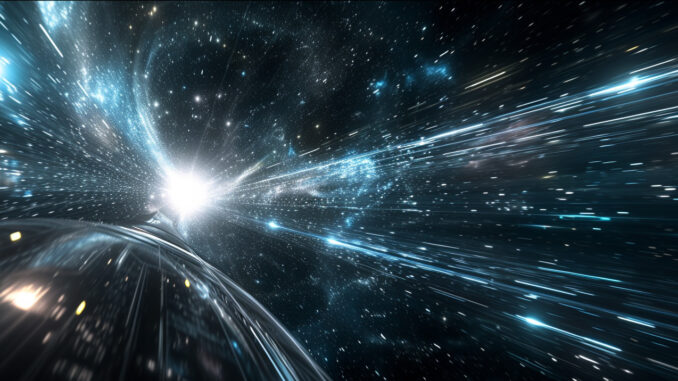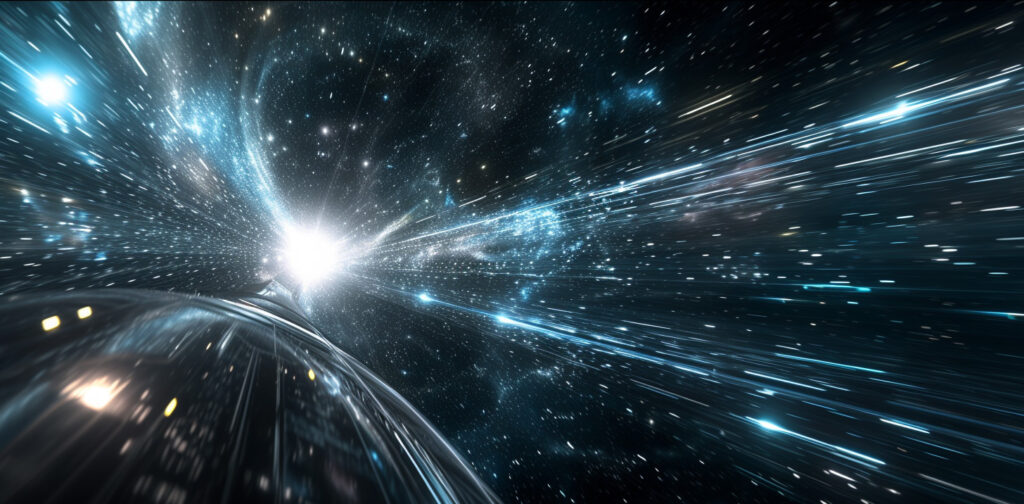
Warp thrusters could be detected via gravitational waves. Extraterrestrials could already be using this advanced technology.
Scientists have studied the possibility that warp thrusters, similar to those in the Star Trek series, could be used by extraterrestrial civilisations. If they malfunction, these thrusters could create gravitational waves that could be detected by advanced observatories such as LIGO. This research opens up new prospects for the detection of extraterrestrial life by monitoring distinct gravitational signatures.
Warp thrusters
Warp thrusters, long regarded as pure fiction, are now being taken seriously by scientists. These theoretical thrusters would enable a spacecraft to travel at speeds close to the speed of light by forming a warp bubble. This bubble would contract the space in front of the craft and expand it behind it, facilitating a cosmic leap. The best-known concept is the Alcubierre engine, proposed by Mexican physicist Miguel Alcubierre in 1994. It requires exotic forms of matter and negative energy, a repulsive gravitational force, to operate.
Detecting gravitational waves
Gravitational waves are disturbances in space-time caused by energetic events such as the merging of black holes or supernovas. Gravitational wave detectors, such as LIGO, can identify these disturbances. The question posed by researchers from the UK and Germany is whether an extraterrestrial civilisation using an Alcubierre engine could be detected by the gravitational waves emanating from this engine. Their study, published in June as a preprint, explores this possibility by simulating the gravitational signature of such an engine.
Simulating warp thrusters
Katy Clough and her team worked for seven years to simulate the gravitational signature of a warp thruster. Inspired by scenarios from the Star Trek series, they modelled a case where the thruster malfunctions and causes a “containment failure”. In this situation, the thruster’s exotic energy and matter disperse, creating oscillations that generate detectable gravitational waves. The simulation revealed that a kilometre-sized vessel travelling at 10% of the speed of light (30,000 km/s) could produce a distinct signature detectable up to 3.26 million light-years away, the distance to the Andromeda galaxy.

The challenge of high-frequency detectors
One of the main challenges in detecting these waves is that current observatories like LIGO are not equipped to capture high-frequency gravitational waves, such as those produced by a warp thruster. LIGO, for example, operates in a frequency range from 10 Hz to 1 KHz. A warp thruster would emit waves at around 300 KHz, well beyond current detection capabilities. Clough and other researchers are therefore calling for the construction of detectors capable of capturing these higher frequencies, which could also enable us to study exotic astrophysical phenomena such as primordial black holes or signals from the early universe.
Implications for the search for extraterrestrial life
The ability to detect warp thrusters would have major implications for the search for extraterrestrial life. If we could identify gravitational waves specific to these advanced technologies, it would provide indirect but solid evidence of the existence of technologically advanced civilisations. What’s more, it could even make it possible to reverse-engineer extraterrestrial systems, opening up new prospects for human technology.
Research into warp thrusters and their detection via gravitational waves is still in its infancy, but it offers an innovative approach to the search for extraterrestrial life. With advances in detector technology and a better understanding of high-frequency gravitational waves, we may soon be able to detect signs of extraterrestrial technology, opening up a new era in our quest to answer the age-old question: are we alone in the universe?
War Wings Daily is an independant magazine.